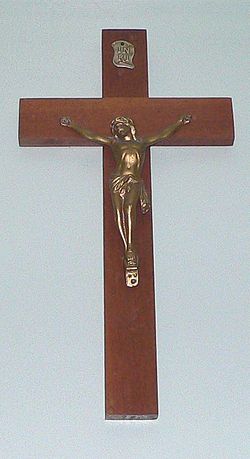For the California hardcore punk band see Crucifix (band)


Jesus was crucified by the Romans outside the gates of Jerusalem on a hill known as "Skull" (Golgotha in Hebrew, Calvaria (Calvary) in Latin). His death is, with his resurrection, the most significant historical event for Christians. The crucifix thus becomes a principal symbol of the Christian religion. It consists of a cross, against which is nailed a corpus, a figurine representing Jesus.
It is primarily used among Roman Catholic, certain Lutheran, and high church Anglican Christians, and emphasizes Christ's sacrifice—his death by crucifixion.
The Eastern Orthodox object to carved representations of God and man by their interpretation of the Old Testament prohibition of graven images. Thus, their depictions of the crucifixion are done through icons. The Catholic Church considers it a sacramental.
Among Protestant denominations, some prefer to depict the cross without the corpus in order to emphasize the resurrection while others claim, along the lines of the Orthodox, that including the corpus is idolatry.
A crucifix is often worn on a necklace as an item of jewelry, or is attached to a rosary. It can be made out of various metals or wood.